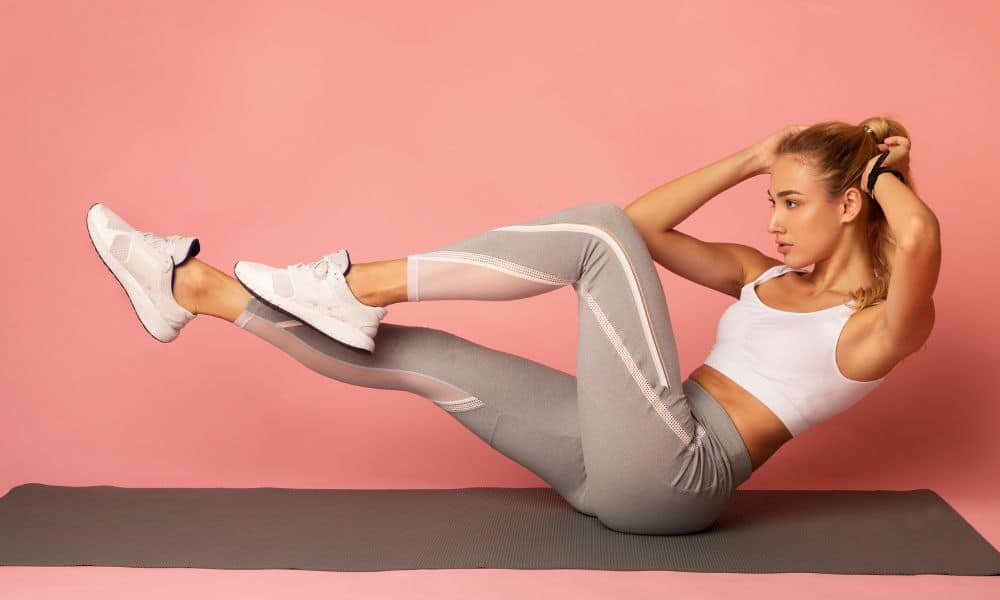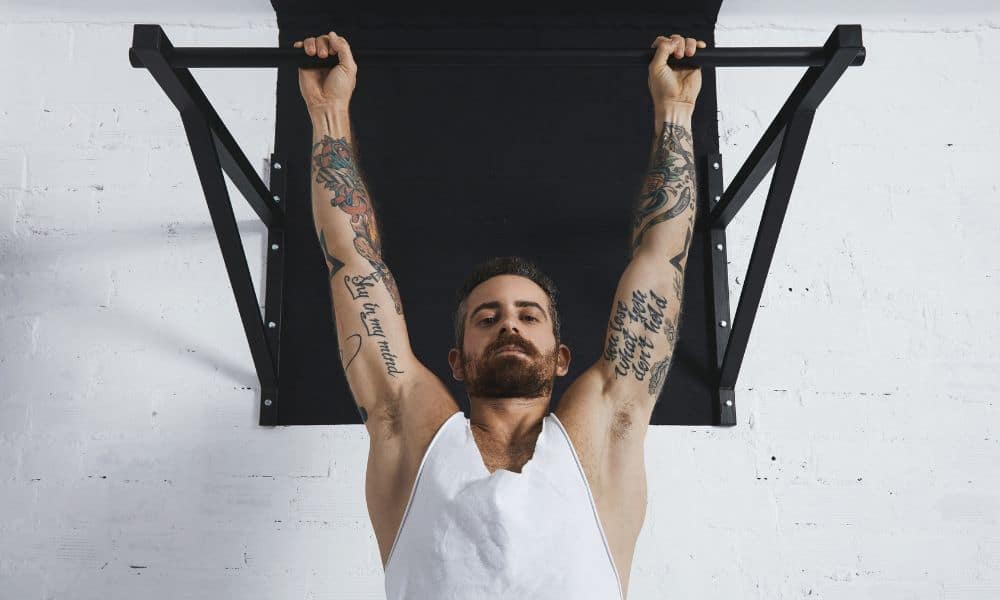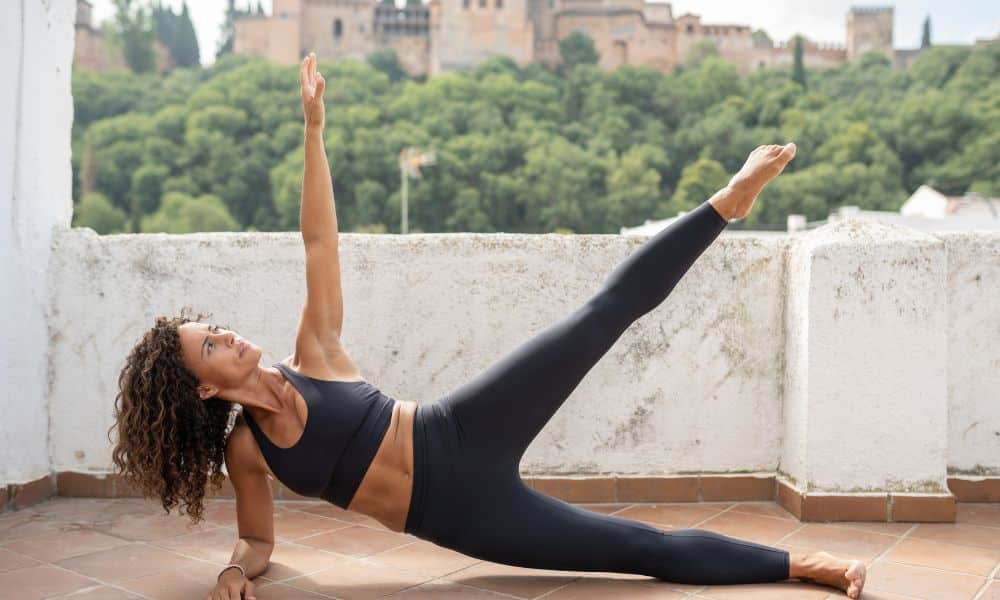What are Crunch Exercises? One of the most popular abdominal workouts is the crunch. Crunches, also known as abdominal crunches, are a core workout that focuses on your abdominal muscles, particularly rectus abdominals and obliques. It enables the development of six-pack abs and tightness of the stomach.
Crunches are a low-cost exercise you can do at home that uses your body weight to tone muscles.

Your core comprises more than just your abs. It also includes the muscles in your pelvis, lower back, hips, and oblique muscles on the sides of the trunk.
These muscles work together to keep your body stable. While crunch is a popular core move, it is not suitable for everyone. It can be hard on your back and neck because it only trains your abs, not the rest of your core muscles.
How to Perform the Crunch Exercise?
Begin by executing 2-3 sets of 10-15 reps for crunches. However, choose sets and repetitions depending on your ability to maintain excellent technique throughout all sets and repetitions.
Step 1: Lie on an exercise mat, knees bent and feet flat on the floor.
Step 2: Make a fist on your head with both hands without interlocking your fingers. The posture of your spine and pelvis should be neutral.
Step 3: While engaging your core, slightly tuck your pelvis and down your ribcage. Throughout the action, keep your chin tucked as if you are cradling an egg beneath your chin. Also, this is where you should start all repeats.
Step 4: Squeeze your abs to start the upward movement. Squeeze your abs while curling your shoulders off the floor. At the top of the move, take a pause.
Step 5: Slowly return to the starting posture while keeping your abs tight. Repeat until you have completed the number of repeats.
Muscles Involved and Physical Activity Improved
When you practice the crunch exercise, the rectus abdominis, or six-pack muscles, are the significant muscles targeted? These muscles go along the front of your stomach in a vertical line. They start at the pubic bone and attach to the fifth, sixth, and seventh ribs and the xiphoid process, a tiny cartilage projection of your breastbone or stomach.
In addition, the rectus abdominis muscle plays a crucial role in spinal flexion, which is the curling of your upper body comparable to crunch.
As synergists, your obliques, including internal and external ones, are also implicated. These muscles help to support the major muscle that is being worked. The internal obliques lie beneath the external obliques and run diagonally along the sides of your torso. These muscles bend your torso laterally, rotating your torso and flexing your spine.
Wrong Ways to Perform
- Yanking on your neck will not increase the effectiveness of your crunch, but it will most likely pull a muscle in your neck. The crunch exercise has nothing to do with your arms; they’re all about your rectus abdominis (most commonly known as the six-pack muscle)
- The muscles on the back of your neck will receive an intense workout if you put your chin to the ceiling. As a result, you will have a painful neck and probably a headache a few hours after the exercise.
- While doing crunches, you need to keep your pelvis and spine in a neutral position to help your core. Once your pelvis is neutral, your lower spine will be curved. We should maintain this while doing crunches.
- Crunches have nothing to do with your arms. Engaging your pectorals, which happens when you move your elbows forward, will divert your attention from the abdominal engagement.
Medical Alternatives
If you have previous or preexisting health issues, you can do crunches. The following are some alternative crunch exercises.
- Diagonal Crunch: To do this exercise, sit on the edge of a chair with your elbows pointing to the side and interlace your hands behind your head. Raise your left knee slowly while bringing your right elbow nearer it. Because of this, your trunk will bend and spin. Hold this position for 1 to 2 seconds when you can’t get the knee and elbow closer, then return to the starting position. After completing a full set, repeat the exercise with the opposite arm and leg.
- Seated Resisted Crunch: To do this exercise, close a resistance band in a door at shoulder height by tying a knot in the middle. Sit straight in a chair 6 inches from the door and face the other way. Hold both ends of the band and press them on your chest over the shoulders. Slowly circle your spine and draw your abdomen in as you complete a little crunch. Hold this position for 1–2 seconds before slowly returning to the beginning position.
The last word on the crunch exercise
We often define the crunch as the gold standard for abdominal workouts. However, it is not a functional core workout because it targets the abdominal muscles. Proper exercise technique is critical for ensuring the safety and success of an exercise program. Still, depending on your specific demands, you may need to alter each exercise to achieve the maximum benefits of the training.
You can also pair different crunches that can work for your core. However, crunches can tax your back and neck, so they’re not for everyone. Instead, you can use alternative workouts such as the bird dog or the mountain climber.
These techniques train not only several core muscles but also reduce spinal stress. Incorporate correct warm-ups, rest, and nutrition into your training regimen to continuously grow and build body strength. Your capacity to recuperate from your workouts will ultimately determine your results. Allow for adequate recovery by resting for 24 to 48 hours before training the same muscle groups.




